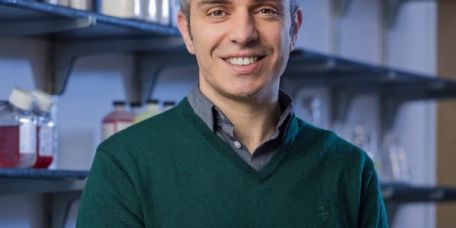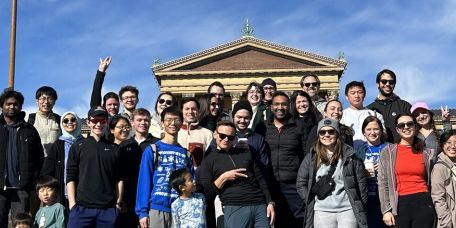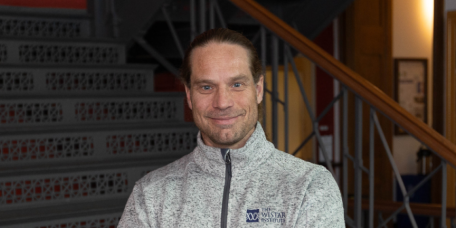The Wistar Institute
Filippo Veglia, Ph.D.
Assistant Professor, Genome Regulation and Cell Signaling Program, Ellen and Ronald Caplan Cancer Center
For Wistar researcher Dr. Gundi Ertl, time away from the lab is best spent with furry — and feathered — friends.
Managing a lab involves a complex orchestration of tasks: running experiments, writing grants, engaging staff, managing the research budget, and answering emails. With many tasks to juggle, you wouldn’t be wrong to think that when the day ends or th…
How the Wistar Flow Cytometry Facility Came to Be
Jeffrey Faust keeps a toolbox next to his office. It looks like something you might find in a garage: screwdrivers, Allen wrenches (standard & metric), wire caps, the indispensable duct tape, and so on. But Jeffrey doesn’t tinker with cars or ha…
Wistar Scientists Identify Esophageal Cancer Biomarkers
PHILADELPHIA—(Dec. 5, 2023)—Wistar scientists have developed a new tool that can help identify cancer-associated microbes by using machine learning technology. Under the leadership of Dr. Noam Auslander — assistant professor in the Ellen and Ronald…
Dr. Cori Bargmann: A Q&A with the Winner of the 2023 Helen Dean King Award
Wistar researchers, staff and guests gathered to present the 2023 Helen Dean King Award to Dr. Cori Bargmann, Torsten N. Wiesel Professor and head of the Lulu and Anthony Wang Laboratory of Neural Circuits and Behavior at The Rockefeller University…
2023 Champion Run for Research Takes to the Streets to Support Wistar Trainees
A group of more than 35 Wistar trainees, researchers, staff, and family members donned their sneakers, stretched their hamstrings, and took to the sidewalks of University City on November 13 to participate in the annual Wistar Run for Research. Wist…
How Does our Immune System Respond to Vaccines?
A Q&A with Wistar’s Dr. Amelia Escolano What got you interested in immunology? My interest in immunology started in college. I took several immunology courses, and I was particularly attracted by antibody biology. One of these cou…
From Lab to Laptop: The Interdisciplinary World of Computational Biology
Wistar’s Dr. Avi Srivastava seamlessly integrates elements of computer science and traditional biology into his new computational biology research lab. By combining wet and dry lab approaches — experimental biology and computational data — he can be…
Wistar Scientists Engineer New NK cell Engaging Immunotherapy Approaches to Target and potentially Treat recalcitrant Ovarian Cancer
PHILADELPHIA—(Nov. 1, 2023)— The Wistar Institute’s David B. Weiner, Ph.D., executive vice president, director of the Vaccine & Immunotherapy Center (VIC) and W.W. Smith Charitable Trust Distinguished Professor in Cancer Research, and collaborat…
Jesper Pallesen, MBA, Ph.D.
Assistant Professor, Vaccine & Immunotherapy Center









